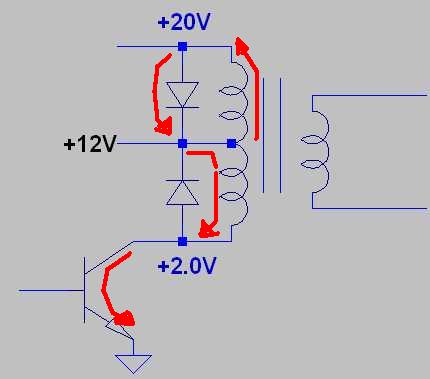myfaithnka
Advanced Member level 4
Hi all,
I am trying to make a home made inverter.
I am referring driver side of this schematic

I replaced 2n6277 with two 2n3773 (parallel).
My problem is that the free wheeling diodes I used are getting burned out every time,I removed them and the circuit is working,but I am not using the circuit without freewheeling diodes as that may kill the transistors due to inductor spikes.
I am using a 20w CFL as secondary load.
Can any one tell me whats happening,how can i solve this.
Please help.
Thanks.
I am trying to make a home made inverter.
I am referring driver side of this schematic

I replaced 2n6277 with two 2n3773 (parallel).
My problem is that the free wheeling diodes I used are getting burned out every time,I removed them and the circuit is working,but I am not using the circuit without freewheeling diodes as that may kill the transistors due to inductor spikes.
I am using a 20w CFL as secondary load.
Can any one tell me whats happening,how can i solve this.
Please help.
Thanks.

